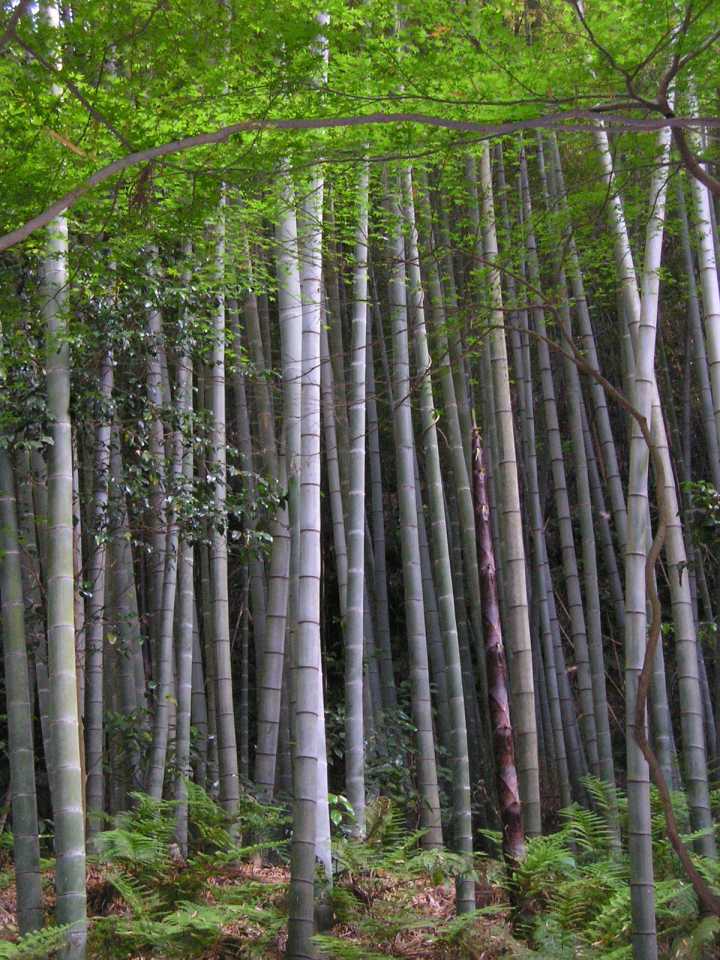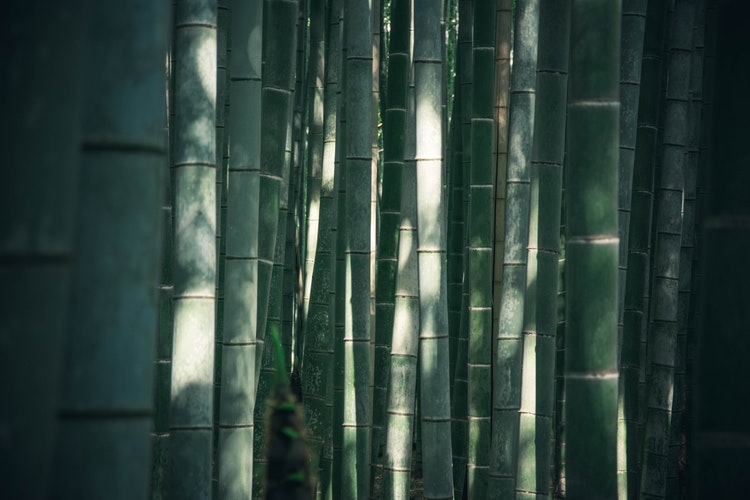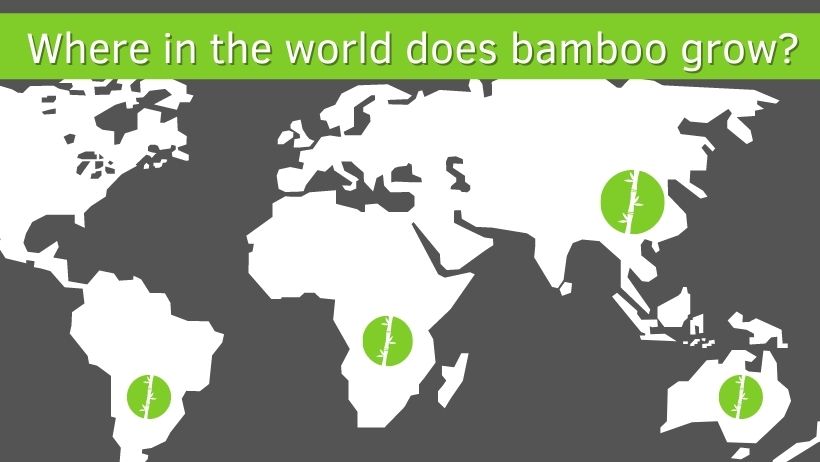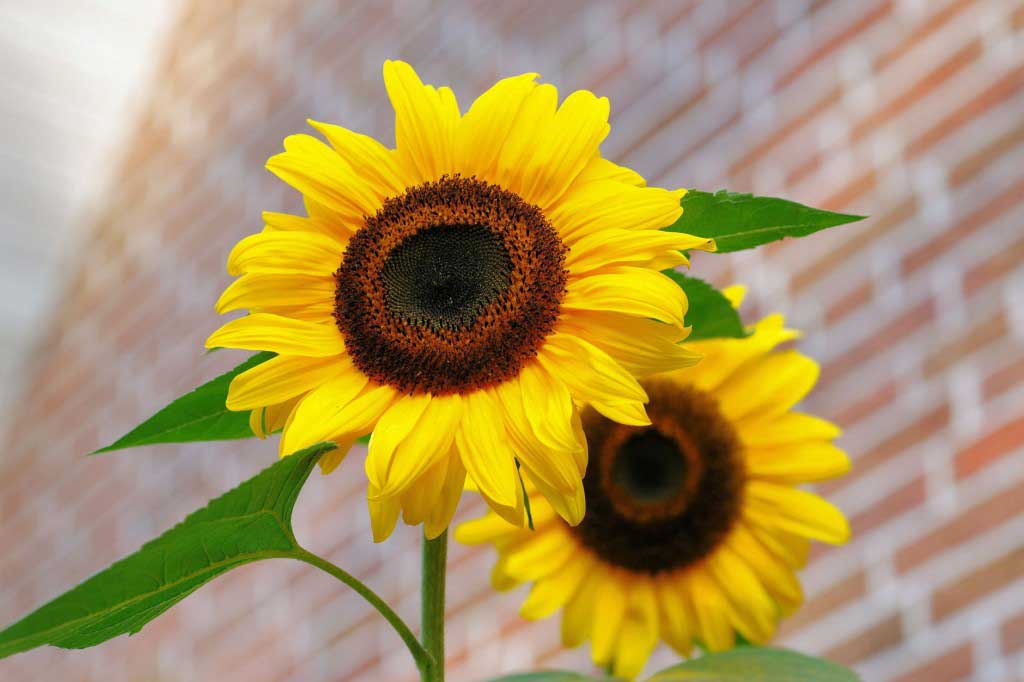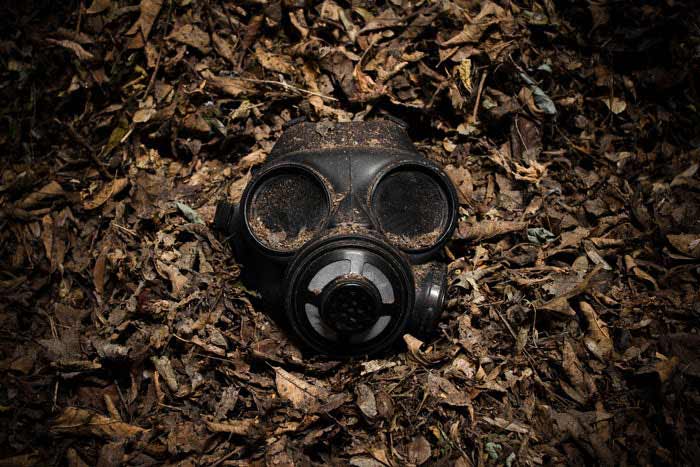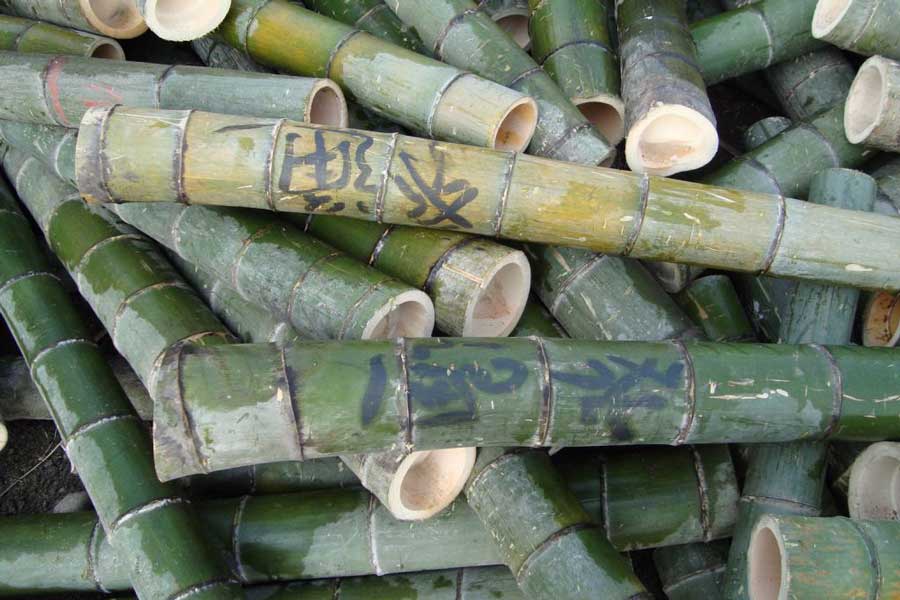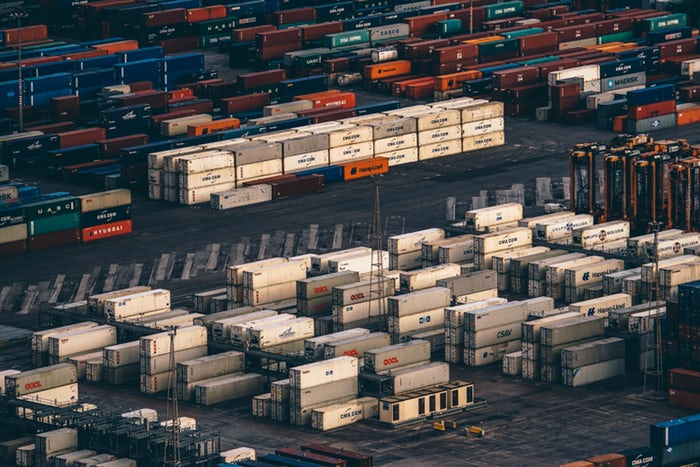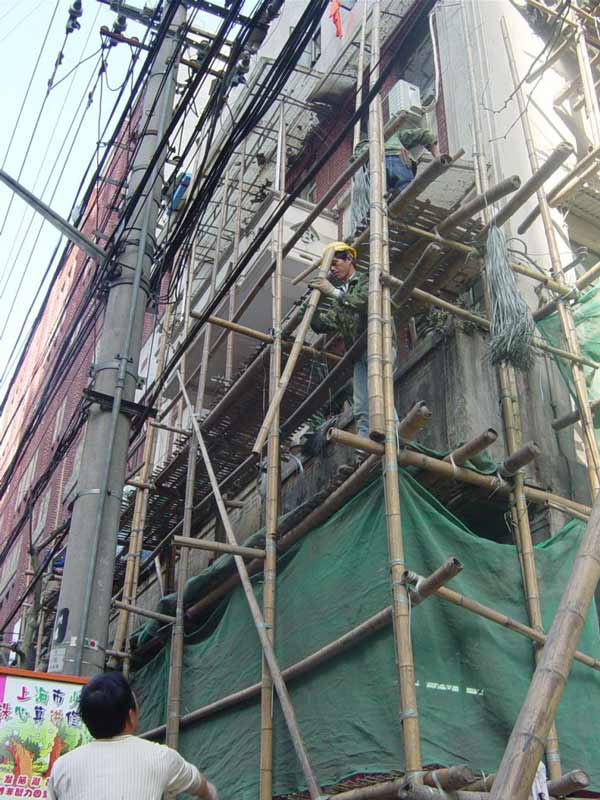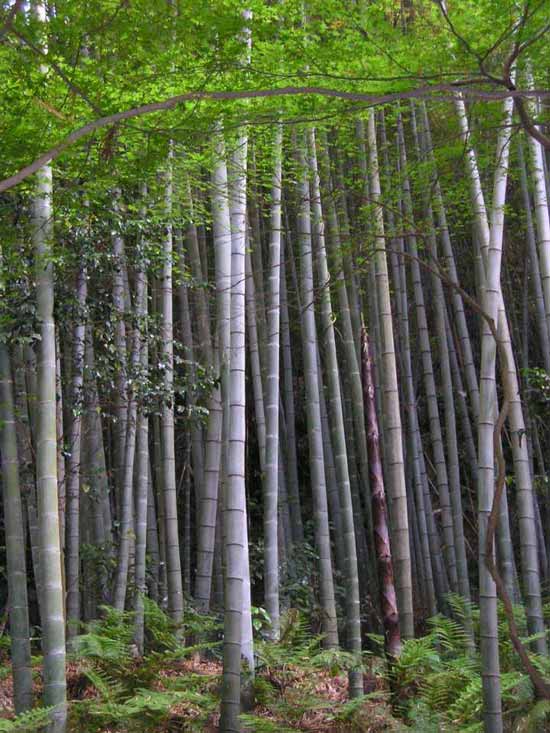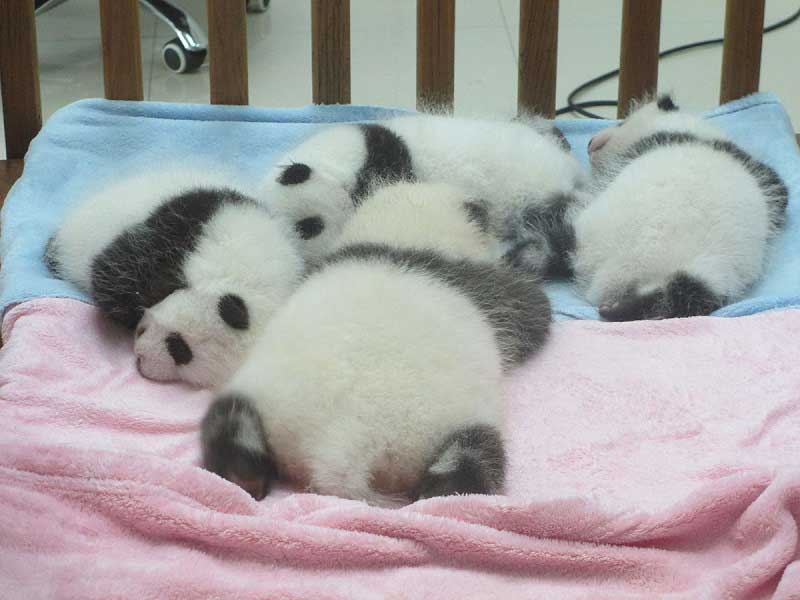Bamboo is targeted as a sustainable material because it takes only five to seven years to grow. Chinese moso bamboo can grow up to a meter in a single day. Perhaps the best quality of bamboo is that it does not have to be uprooted to be harvested. This means that the stalks can be cut and replenished without needing replanting – unlike other types of wood.
Funnily enough, bamboo is not even a wood itself: it comes from a sub-family of grasses! In terms of bamboo flooring, it is only a “hardwood” by virtue of the products it replaces. Indeed, bamboo is an incredibly tough material – an alluring quality beyond its sustainable harvesting and incredible growth rate. To achieve this signature hardness, bamboo must fully mature, and that is why it can take years to grow for harvest even if it can visibly grow in a single day.
Thus, bamboo has given a whole new meaning to the old adage “watching grass grow.” Blink and you might miss it! This is just a surface-level look at the benefits and growth properties of bamboo. This article will delve deeper into what makes bamboo so special.
What is bamboo?
Bamboo is a fast-growing grass with a hollow stem. Not only that, but it actually holds the Guinness World Record for fastest growing plant! It’s important to keep spacing in mind while planting bamboo trees.It is native to many countries and most continents with humid and tropical climates, including Asia (most notably China), Australia, sub-Saharan Africa, and South America.
There are over 1,400 species of bamboo worldwide, and surprisingly, all members of the same species will flower at the same time, no matter what part of the world they are in. Some scientists attribute this to an evolutionary “alarm clock” because the plant will flower regardless of the environmental conditions it is put under.
The bamboo plant is widely used by humans: from making food to furniture to floors. However, it is also a big food source for many animals, like pandas (obviously), lemurs, gorillas, chimpanzees, elephants, and caterpillars. Some animals even get drunk from the fermented bamboo sap, and they behave in much the same way as humans do when drunk, as you can see in the video below.
How does a bamboo plant grow?
Bamboo is one of the fastest-growing plants on the planet. It grows quickly with some species can reach full maturity in just 90 days, and most taking just a couple of years. One bamboo species can grow a massive 35 inches per day (or 1.5 inches per hour). That’s a fact worthy of a Snapple cap!
How can bamboo grow that fast?
Bamboo plants create all the cells they need to grow when they’re still little buds. Unlike in animals, these cells don’t have to split apart while growing; they streeeeetch out. The cells are filled with water and causes them to expand quickly, like a balloon on a faucet.
This is common for grasses, and it’s why you need to mow your lawn every week. But only trim back bushes every few months, and cut tree branches every couple of years.
A bamboo plant is a kind of like a Slinky. It looks small when you first see it, but when you stretch it out, you’d be surprised how far it goes. Right kids?
Other fast-growing plants
Of course, bamboo isn’t the only plant that can shoot up in the blink of an eye. Check out this list of the fastest-growing plants on the planet. You might even want to use some of these in your garden for instant plastification!
- Poppies – They’re classified as weeds, but let’s face it, they’re the nicest looking weeds.
- Morning Glory – It’s a flower, not a wood.
- Sweet Peas – Perfect for the bees.
- Castor Beans – These can grow up to 10 feet in one year.
- Nasturtium – It’s great for natural pest control, so place near any fruits and vegetables.
- Evergreen Cherry Laurel – This can grow by 23 inches per year.
- Cucumbers – Plant now for summer salads.
- Sunflowers – It’s no secret that these beauties shoot up over the summer months.
- Photinia – This evergreen shrub will provide beauty all year round.
The eco-friendliness of the bamboo plant
Bamboo is one of the most eco-friendly materials on the planet due to how it’s grown, the method of harvesting, and how it gets transported to your door. Some people are trying to play down the greenness of bamboo to suit their ends, but we shouldn’t let them win.
Let’s look at some of the ways that bamboo is greener than grass. Get it? Because bamboo is a grass… never mind.
1. Repairing Damaged Soil
Bamboo plants can grow in infertile soil, which probably has some complicated scientific explanation, but it sounds like sorcery to me. When it grows in infertile soil, it provides farmers with an income (because they can now grow things where they previously couldn’t), and it repairs the land by making it fertile again.
How does it make the soil fertile again? The bamboo plant’s nutrient-rich leaves will drop off during growth or harvest and fall onto the ground below, where they will decompose and transfer those nutrients into the soil. Magic!
2. Countering deadly toxins
You probably know that all plants serve as the lungs of the earth. They take in carbon dioxide and release oxygen during photosynthesis, and humans and animals can breathe easier. But you might not know that bamboo actually takes in 4 times more CO2 than your typical plant and thereby releases more oxygen.
Bamboo can even remove toxins from the earth. Phytoremediation, which sounds like a Harry Potter spell, is when bamboo removes lead and mercury from the earth and traps them inside its stalk. After the stalk is harvested, instead of dying and decomposing, the toxins remain inside the stalk where they pose no danger to humans.
Plus, bamboo is grown without pesticides, so there’s no spraying of chemicals that can be hazardous to human health, unlike other plants. Thanks, bamboo!
3. A rapidly renewable resource
Do you know how people are always saying that trees take hundreds of years to grow into forests? Well, it turns out that trees take the better part of a century to mature enough to be cut down for use as lumber for tables, chairs, floorboards, etc.
Do you know how long it takes bamboo plants to mature? 5 years. That means that the plants being harvested now were only planted or last cut down in 2013.
Side note: How is it possible that 2013 was five years ago? I swear, it was only last week.
4. Harvested by hand
Another way bamboo is incredibly eco-friendly is how its harvested. For thousands of years, bamboo forests have been harvested by hand, meaning no heavily polluting feller kicking out CO2. It also creates a safer environment for the animals and plants near the bamboo because the farmers can spot them as they go along and take measures not to harm them.
Harvesting bamboo regularly is extremely important for the local eco-system. Cutting down the super tall bamboo allows the sunlight to nourish smaller plants that would be otherwise hidden. Don’t forget that sunlight gives plants their food through photosynthesis.
The farmers even mark the bamboo plants with ribbons or spray paints, as seen in the photo below, to ensure that they harvest them at the optimum time for that plant. They don’t just plant and harvest entire sections at a time because that would heavily disrupt the local ecosystem, affecting plant diversity and disturbing animal habitats.
5. The great bamboo regeneration
As mentioned above, bamboo is grass. So, much like your lawn at home, it regenerates when the stalk is cut. It also means that when bamboo is harvested, the plant doesn’t need to be uprooted.
Other plants that do need to be uprooted (i.e., trees) will leave a massive hole in the earth that surrounding soil will fall into. This is not just unsightly; it’s also pretty dangerous for the surrounding area.
This will leave the land much less stable and allow topsoil to be easily washed away during heavy rain or blown away by strong winds. This soil erosion is dangerous because it can contribute to decreased soil fertility, lower water quality levels, and even mudslides.
6. Less shipping
Now, you’re probably wondering how eco-friendly bamboo can be if it has to be shipped from China. That’s a fair point, but there’s a slight problem with that thinking. Almost everything sold in the US is made in China or another Asian country.
I wouldn’t be surprised if the finger painting that my nephew gave me for my birthday has a “Made in China” sticker on the back.
Even all-American hardwoods proudly grown in the US are sent to China for milling and manufacturing because it’s cheaper. That means double the shipping, which is the least eco-thing I’ve ever heard of. Thankfully, sending items via a container freight ship is the most eco-friendly shipping method, but that still doesn’t mean you should do it more than you need to.
What is the bamboo plant used for?
Industrious people in China and worldwide have used bamboo for millennia to make items that would improve their lives. This is because bamboo is stronger than wood, brick, or concrete, has a higher tensile strength than steel, and is flexible enough for delicate work.
These items include:
- Paper
- Books
- Food, including certain dumplings and pickled bamboo
- Alcohol, including vodka and wine
- Bamboo flooring
- Clothing, including accessories like hats and shoes
- Ornaments
- Arrows
- Fuel, including charcoal and biofuel
- Scaffolding
- Cabinetry and crafts
- Musical Instruments
- Cooking utensils, most notably chopsticks
- Water pipes
- Fishing Poles
- Jewelry
- Tools, like drills and mallets
- Furniture
- Sunglasses
- Boats
- Flagpoles
- Ropes
- Skateboards
- Accommodation, including tree houses, temporary huts, and large mansions
- Bike frames
- Floors
Many of the crafts, instruments and interior home finishes in the list above are created using bamboo plywood. This is just the tip of the iceberg. Bamboo can be used to make anything that you could make from hardwoods. The only difference is that bamboo goods will cost less and be more durable.
Moso Bamboo
Moso bamboo, also known as hairy bamboo or tortoise-shell bamboo (or Phyllostachys edulis for the science geeks), is native to China and Taiwan. It has also been naturalized elsewhere by travelers returning from the East, who recognized the plant’s huge advantages and wanted to bring them back to their countries. You can even find it growing in the USA as of 2016!
When left to grow, these yellow and green canes can reach incredible heights, with a large canopy of feathery leaves that starts around 30 ft overhead.
How is it used?
The most common uses for Moso bamboo include:
- Textiles – it’s average breaking tenacity is three times that of rayon, cotton, polyester, or wool.
- Food – its shoots are edible and tasty.
- It has some seriously dense and strong fibers that make it perfect for making bamboo flooring planks that can really take a beating. It’s like, super durable and stuff.
How does it grow?
As with all bamboo species, Moso grows fast and can quickly reach heights of over 90 ft. For proof, look at this video series that tracked the growth of Moso bamboo over a two-years:
And that’s not even in its native environment; imagine how fast it could have grown in China!
Moso bamboo can spread through sexual reproduction… I mean, it’s pollinated by bees; get your head out of the gutter! But the most common type of reproduction for the Moso plant is asexual because it only flowers and seeds roughly once every 50 years.
The bamboo plant and pandas
Panda bears are beloved by most humans, so we would be right to rebuke anyone wanting to harm them. Not only are they adorable (see below picture for proof), but they’re also endangered.
So the last thing anyone wants to do is take away their food source. Now, you probably already know that pandas only eat bamboo, and you think that regardless of the other benefits of bamboo, you don’t want to take the plant from the pandas.
Well, luckily, pandas don’t eat the Moso species of bamboo. It could be that Moso doesn’t taste good, or it’s too far away, or maybe pandas are allergic to Moso. But whatever the reason, you can feel safe knowing that using Moso bamboo flooring isn’t hurt any panda bears.
Source: Joshua Doubek, Wikipedia
That about wraps up this blog on the incredible, almost magical, bamboo plant, and I’d like to hear from you in the comments below.
What was the most surprising thing you learned in this piece? What burning questions do you have about bamboo? Let me know, and it might just be the subject of my next blog. If we all learned one thing, it’s that “watching paint dry” will reign supreme. Perhaps “not all grasses grow the same” can be the new word on the street.

